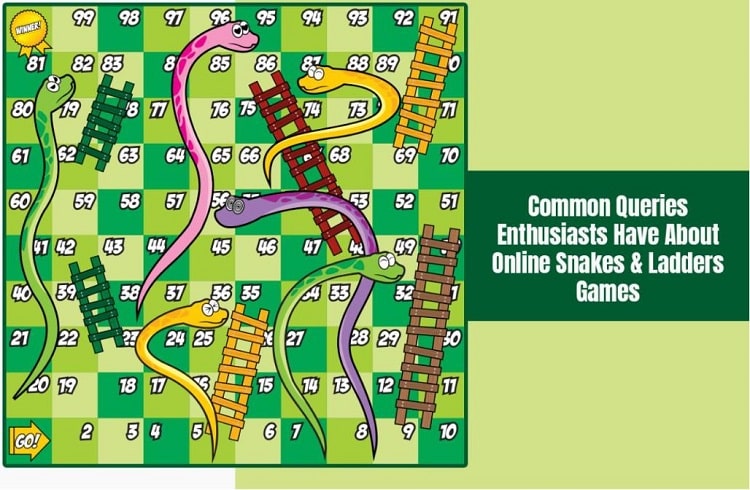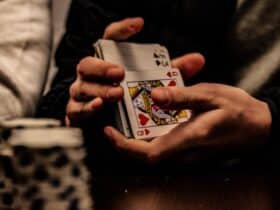Snakes and ladders is an old classic that has existed for a long time. For those new to this game, here is a brief guide on its origins, what it signifies, and how to play the game:
Origin Of Snakes And Ladders:
Originally the name bestowed on the game of Snakes and Ladders was Gyan Chaupar or ‘Game of Knowledge’, and Mokshapat or Moksha Patamu are its other given names. Tales of its origins are a bit vague, but it is believed that the game has been in existence since as early as the 2nd century BC. The game board’s design has always been made up of a 10×10 grid of squares.
The Scroll describes in vivid detail the ancient history of Snakes and Ladders and its relevance to Indian culture.
Snakes and Ladders Makes Its Journey Across The World:
Since then, it has found its way to become a staple game of choice for beating boredom in homes around the world. Its first stop was Britain, where it was sold under the name “Snakes and Ladders.” Thanks to its novelty factor and easy gameplay, it quickly became a favorite of the masses.
The religious significance of vice and virtues showcased by the Indian version of Snakes and Ladders was replaced by a more crowd-pleasing cartoonish representation of the snake and a ladder. The other change brought about in the newer version was to make the snakes and the ladders equal in number, while in the original, there were more snakes than ladders.
From Great Britain, it reached the shores of the United States, where Milton Bradley introduced it to the public under the name Chutes and Ladders in 1943. In Chutes and Ladder, players used a spinner to determine the number of steps they would move ahead instead of rolling a die.
Shatranj al- ‘urafa was another variant of the game that was popular in countries with Muslim-majority populations, such as Turkey and Iran. It represented the Dervish’s quest to leave aside the temptations of the mortal world and achieve union with God.
Read on to learn more about the different aspects of this classic board game and also about its gameplay in detail. So without any further ado, let’s dive in as we attempt to understand how best to play this game online.
1. What Is The Objective Of Snakes and Ladders?
Before setting out to play snakes and ladders, the players must familiarise themselves with the game’s objective. The aim is relatively simple, the first player whose token reaches the 100th square first is declared victorious.
2. How Is Snakes & Ladders Played?
As Snakes and Ladders involves multiple players, to begin with, the order in which the players are to roll the die must be established, and who gets the first turn. An effective way to decide this would be for all the players to roll the dice, and the player who rolls the highest number gets to go first. The other players get to play in a clockwise direction.
The board has a mixture of snakes and ladders in equal numbers. If a player lands on a number at the foot of the ladder, then they get to climb all the way to its top. If you happen to, unfortunately, land on the mouth of a snake, then you’ve got to end up all the way where its tail ends.
Players should land on the final square on the board to claim victory. Simple as it may seem, the snakes are pretty significant obstacles to pass through. A wrong roll of the die, and you move back a certain number of spaces depending on the length of the snake.
3. What are the Rules of Snakes And Ladders?
The rules of Snakes and Ladders are straightforward. Once the order of play has been decided, the game can proceed according to the following rules.
- The player who has rolled the highest number gets to throw the dice again and can begin the game only if they get a six. If not, the remaining players make their attempt to start their game.
- Once players have been fortunate enough to get a six, they can move forward with the number of steps corresponding to the number on the dice. For example, if the player rolls the die and ends up with the number four, he will move his token four spaces ahead, and so on.
- Thus, the game proceeds in the order of play decided, and once all players complete their turn, the dice returns to the first player to make his move.
- To win, the player must roll the exact number on the dice to land on the number 100. For example, if the player is on 96 and rolls a five, they cannot move their token and can try again on their next turn. To be able to move, they will need to roll four or fewer.
Conclusion:
In the old version of the game, the ladders were typically associated with positive actions and their consequences. At the same time, the snakes were usually linked with any negative actions and their corresponding outcome. The ultimate goal was to attain perfection and free oneself from the cycle of reincarnation.
Breaking free of the cycle of reincarnation meant entering nirvana or a state of spiritual enlightenment and perfection. This state is free of all worldly cares and is defined as Moksha. On the game board, the state of Moksha is represented as making it to the 100th square.














Leave a Reply